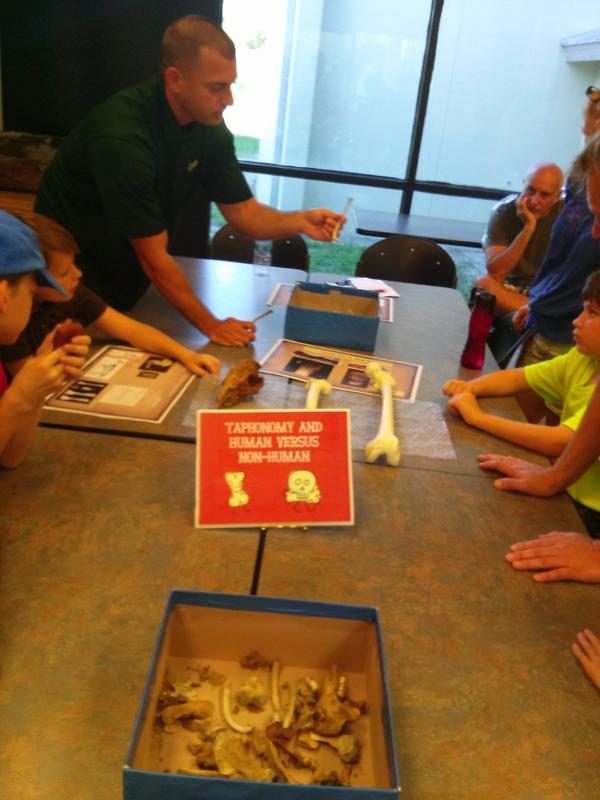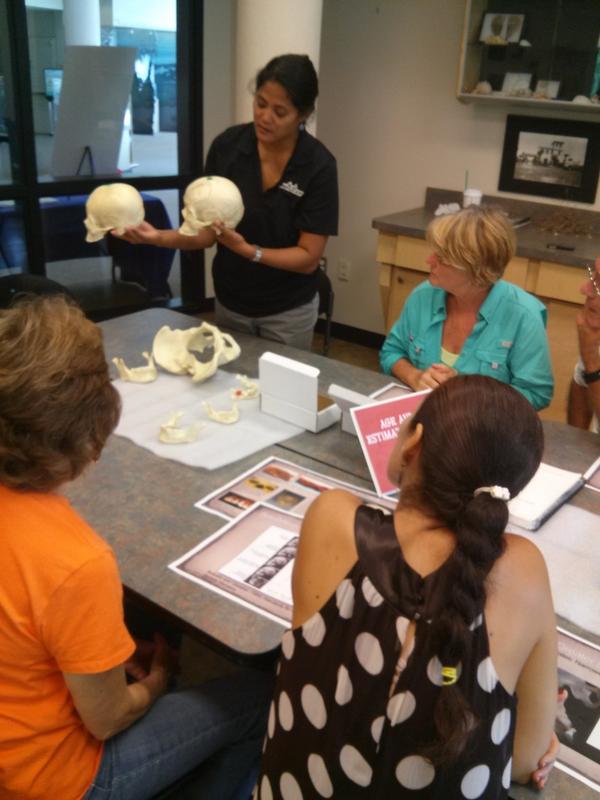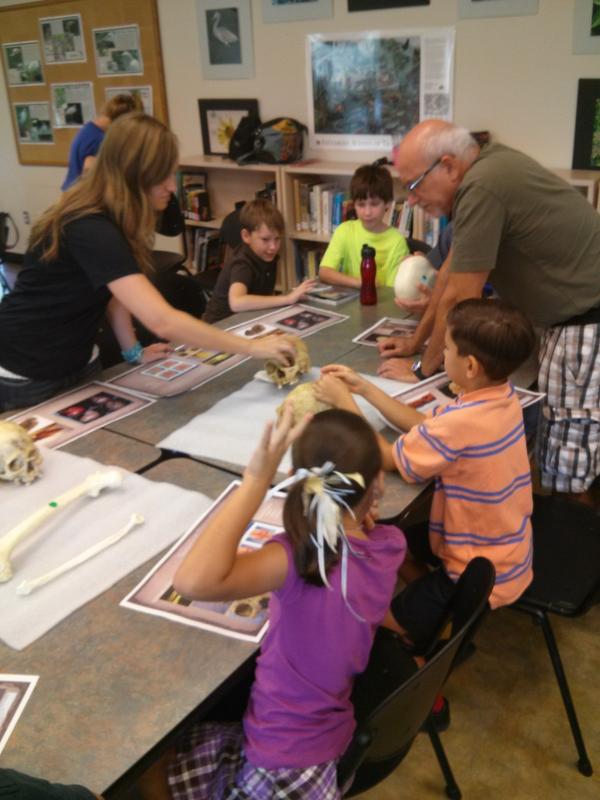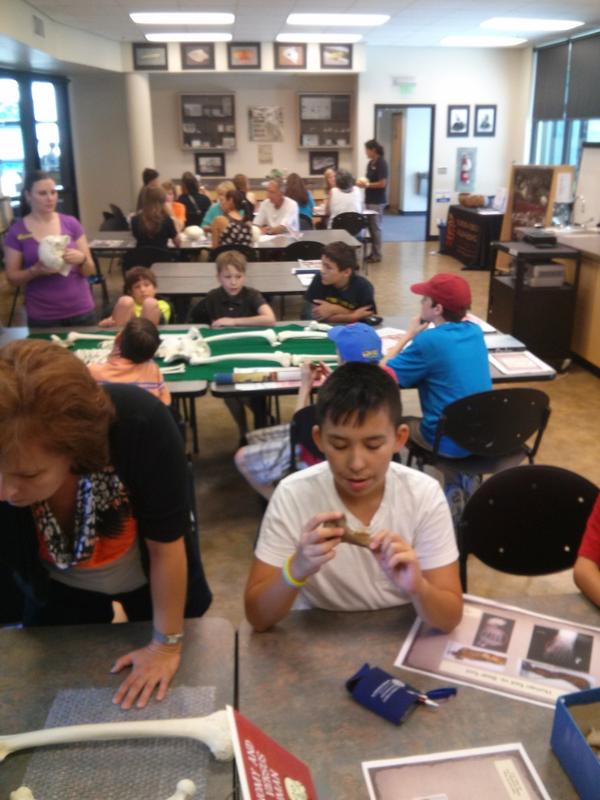October 29, 2013




In celebration of International Archaeology Day, staff from the West Central office of the Florida Public Archaeology Network put on a hands-on archaeology workshop at the Weedon Island Preserve in St Petersburg, FL. The workshop, entitled “Archaeology Works: Bones”, is part of a larger workshop series developed by FPAN West Central staff and allows participants to get up close and personal with artifacts that archaeologists study on a regular basis. Other topics in the Archaeology Works series have included pottery, shells, hunting technology, and archaeological flotation/archaeobotany. For “Archaeology Works: Bones”, FPAN archaeologists were assisted by forensic anthropologists from the University of South Florida in Tampa. Members of the public, from young children to retirees, learned how archaeologists and anthropologists study human remains, and then got to try their hand at different research methods using casts of bones from the USF teaching collection. One of the things participants found most interesting was the fact that human bones can reveal so much about the culture they come from. The activities people do and the environment they live in leave marks on their bodies, and with the proper skills anthropologists and archaeologists can learn a lot about people in the past (as well as those today) just from their remains.
International Archaeology Day Blog